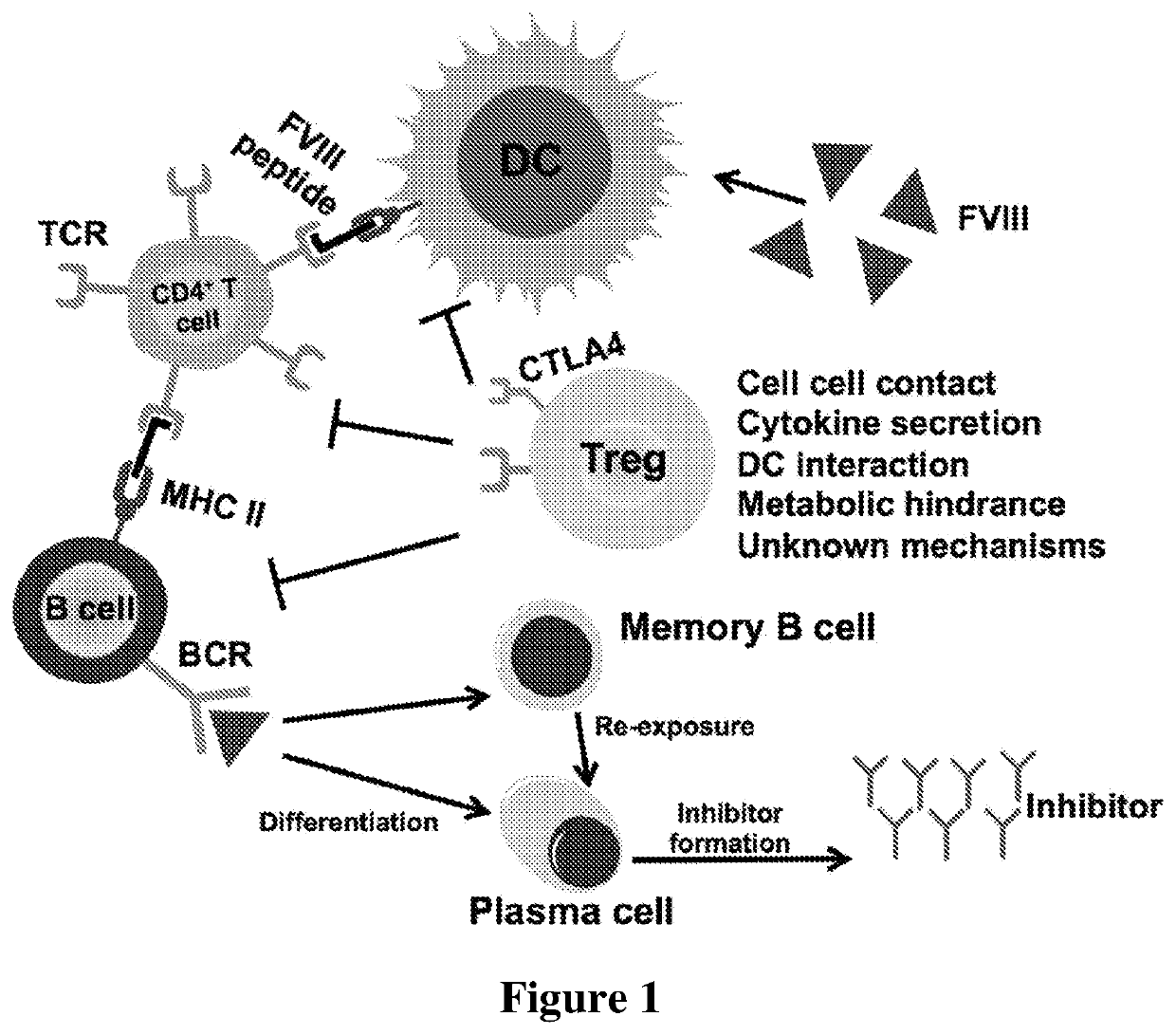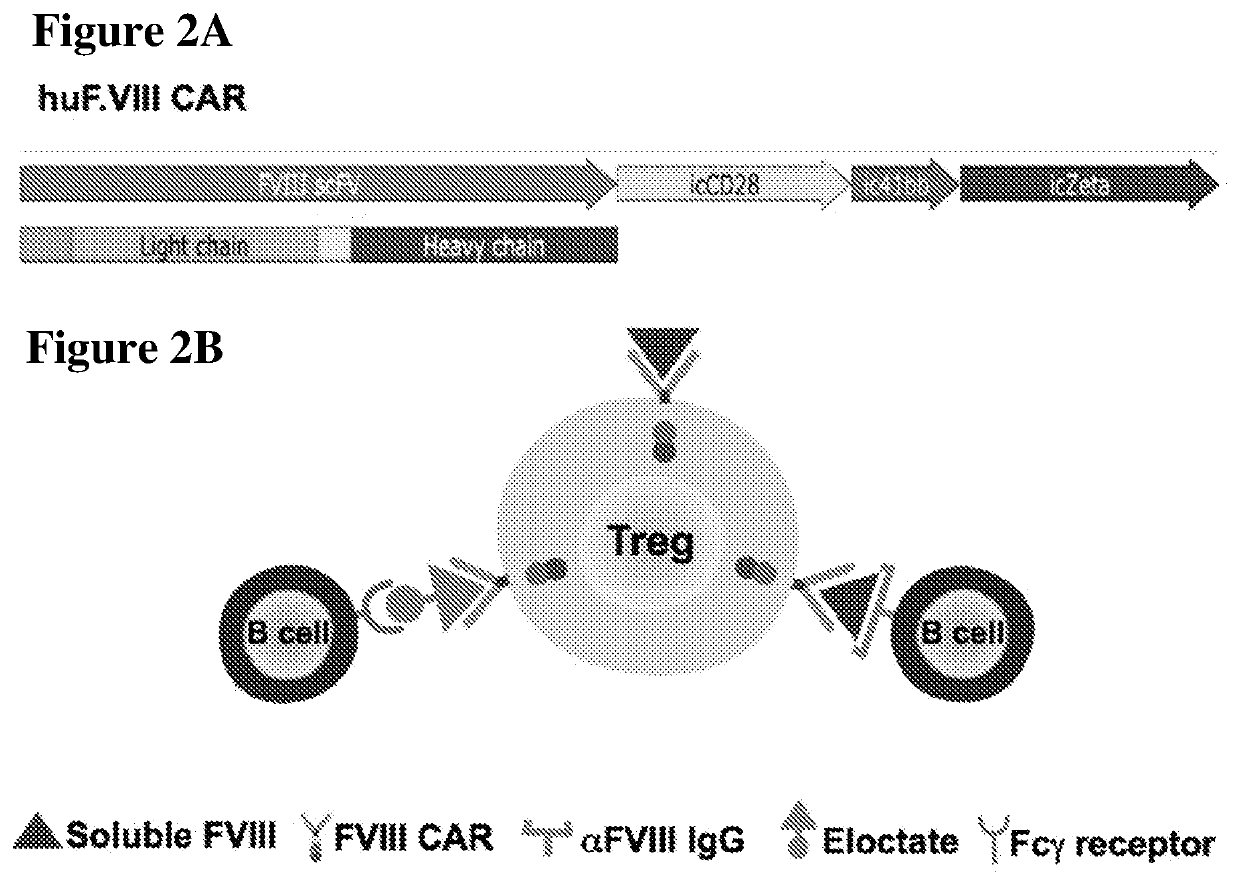Fviii chimeric antigen receptor tregs for tolerance induction in hemophilia a
- Summary
- Abstract
- Description
- Claims
- Application Information
AI Technical Summary
Benefits of technology
Problems solved by technology
Method used
Image
Examples
example 1
[0098]In vitro expansion of murine Tregs was successfully optimized. GFP+ cells were purified (>98% purity) from spleens of FoxP3-GFP reporter mice using flow sorting. Sorted cells were stimulated in culture using anti-CD3 / CD28 beads in the presence of high levels of IL-2 (2000 U / ml). About 20- to 100-fold expansions within 14 days were routinely accomplished (FIGS. 4A-4B). Expanded Tregs were ˜80% FoxP3 positive (FIG. 4C).
example 2
[0099]BALB / c-derived Tregs expanded in vitro were injected (1×106 Tregs / mouse) into hemophilia A mice with exon 16 deletion (BALB / c F8e16− / −) with established inhibitors. Treg therapy controlled antibody titers in these mice despite continued F.VIII administration suggested that polyclonal Tregs aid in ITI (FIG. 5A).
[0100]Three repeat infusions of expanded 1×106 Tregs were able to suppress inhibitors more effectively than a single dose (FIG. 5B).
example 3
[0101]A 3rd generation CAR specific for human F VIII was generated in a retroviral system (pMys-IRESGFP, see FIG. 12 and SEQ ID NO: 3). To this end, an EBV transformed B cell line (BO2C11; originally developed by Saint-Remy and colleagues, kindly provided by Dr. David Scott), which produces IgG4 against residues 2125-2332 of huF.VIII corresponding to the carboxy-terminal end of C1 and the complete highly immunogenic C2 domain was used.
[0102]The single chain variable fragment (scFv) was cloned and fused to a 3rd generation CAR construct expressing CD3ζ, CD28 and 4-1BB signaling molecules (received from Dr. Angelica Loskog, Uppsala University) (FIG. 2A). About 25-50% transduction of CD3 / 28 bead-activated CD4+CD25+ Tregs was achieved as quantified by GFP expression.
[0103]Initially, no activation of huF.VIII CAR-Treg in response to free human F VIII in vitro was observed. However, binding to an Fc fusion F.VIII product (Biogen, Cambridge, Mass.) in the presence of cross-linking antibody...
PUM
 Login to View More
Login to View More Abstract
Description
Claims
Application Information
 Login to View More
Login to View More - R&D Engineer
- R&D Manager
- IP Professional
- Industry Leading Data Capabilities
- Powerful AI technology
- Patent DNA Extraction
Browse by: Latest US Patents, China's latest patents, Technical Efficacy Thesaurus, Application Domain, Technology Topic, Popular Technical Reports.
© 2024 PatSnap. All rights reserved.Legal|Privacy policy|Modern Slavery Act Transparency Statement|Sitemap|About US| Contact US: help@patsnap.com










